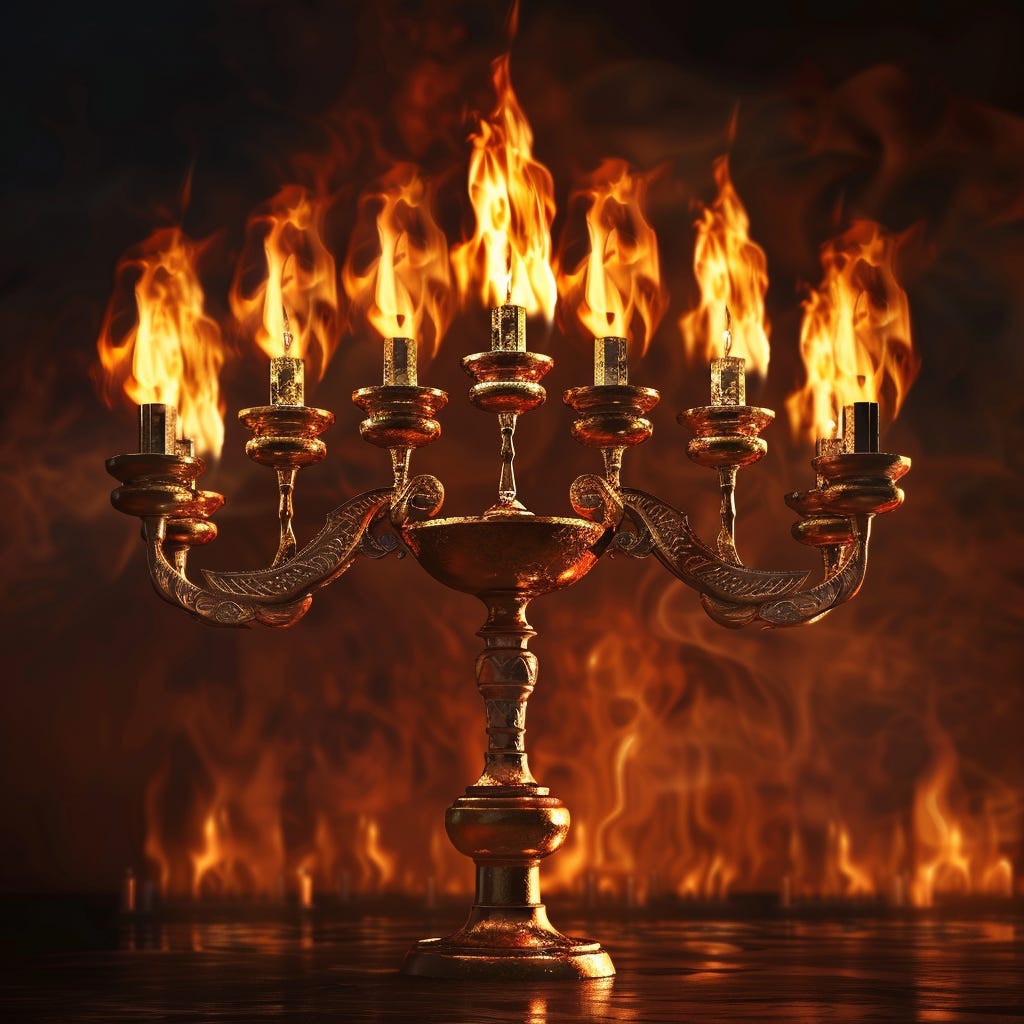Parshat Behalotcha - Creators Creating Creators
This week holds special significance for me as I celebrate both my Parsha and my Siyum on Seder Nashim. Finishing up one of the six Sedarim, Orders of the Talmud, got me thinking about the number 6, its bigger brother 7, and how it ties into the essence of creation.
Let’s start with 6. The Talmud, the Oral Law, is comprised of 6 orders. There are also 6 days in the week. Six represents all the directions of existence—north, south, east, west, up, and down. Finally, in Kabbalistic terminology, we talk about the six emotional traits of Zeir Anpin which are:
Chesed - Lovingkindness
Gevurah - Severity/Discipline
Tiferet - Beauty/Harmony
Netzach - Endurance/Eternity
Hod - Glory/Gratitude
Yesod - Foundation
These six traits form the foundation of our emotional and spiritual lives, guiding us in how we interact with the world and each other.
Now, let’s consider the number 7. Seven is the number that takes the cycle to its culmination, representing Shabbat, the seventh day. Shabbat is not just a day of rest; it is a day of bittul, self-nullification, where we abstain from creative work to connect with the Divine. This cessation from our daily activities allows us to elevate our souls and focus on spirituality, transforming the mundane into something holy.
Shabbat is associated with the trait of Malkhut, kingship. Kabbalah teaches us that the sole job of Malkhut is to transmit intellect and emotion into action, into a self-sustaining reality. Paradoxically, this is done by NOT working, by stepping away from our own creations and acknowledging G-d as Creator.
Indeed, G-d himself utilized the concept of rest as a finishing touch to the creation of the world. We are told that G-d created and destroyed many worlds prior to the one we inhabit. What changed to make our world sustainable? The clue can be found in the verse
"אשר ברא אלוהים לעשות" ("that G-d created to do")
G-d’s world was only perfect when he could rest and reflect on the power of creation, growth and regeneration with which he infused his world.
This parallels a common question of the name of our Parsha. Be’halotcha speaks of G-d’s command to Aharon to prepare and kindle the Menorah in the temple. Why didn’t the Torah use a more common word for kindle?
Our commentators point out that the commandment of lighting the Menora needs to be fulfilled in such a way that the flame rises on its own.
עד שתהיה שלהוות עולה מאליה
6 is a full week of work, a full set of emotions.
But without the bittul, the rest, the reflection, 6 has no sustainability.
(Is it any wonder that the Menora had 7 branches?)
Learning the 6 Orders of Mishna is not enough. One needs to also build humility, character and love of G-d. One needs to live Torah, not just learn Torah. One needs to teach Torah and pass it down the generations. All these things are part of the mystical 7th Order of the Mishna - that which causes Torah to sustain and live on.
HADRAN ALACH SEDER NASHIM.
(This dvar Torah is in honor of Daniel Singer who’s consistent nudging I hear in my ear every Friday. Thanks for pushing me to write Torah.)


